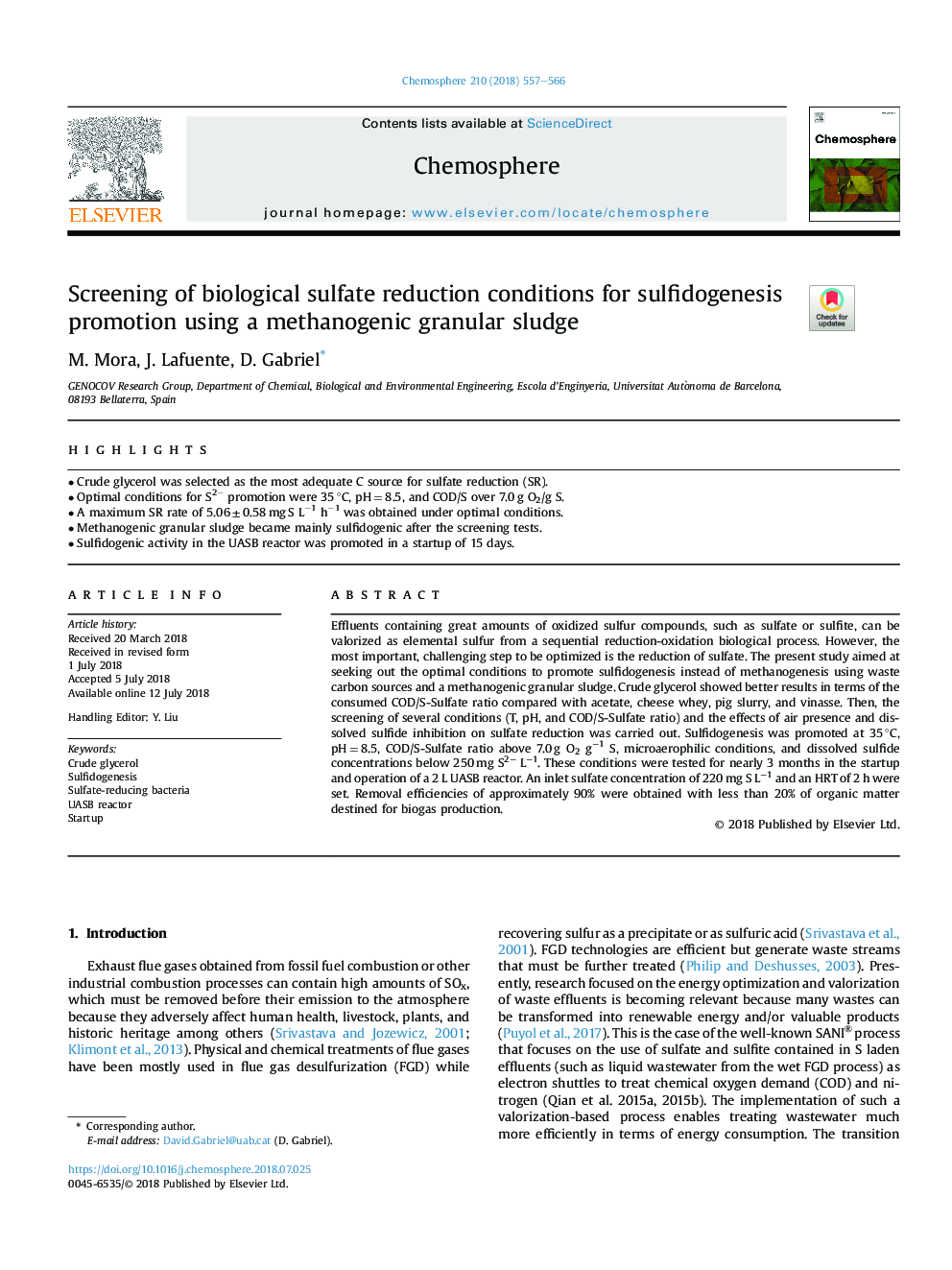| Article ID | Journal | Published Year | Pages | File Type |
|---|---|---|---|---|
| 8850514 | Chemosphere | 2018 | 10 Pages |
Abstract
Effluents containing great amounts of oxidized sulfur compounds, such as sulfate or sulfite, can be valorized as elemental sulfur from a sequential reduction-oxidation biological process. However, the most important, challenging step to be optimized is the reduction of sulfate. The present study aimed at seeking out the optimal conditions to promote sulfidogenesis instead of methanogenesis using waste carbon sources and a methanogenic granular sludge. Crude glycerol showed better results in terms of the consumed COD/S-Sulfate ratio compared with acetate, cheese whey, pig slurry, and vinasse. Then, the screening of several conditions (T, pH, and COD/S-Sulfate ratio) and the effects of air presence and dissolved sulfide inhibition on sulfate reduction was carried out. Sulfidogenesis was promoted at 35â¯Â°C, pHâ¯=â¯8.5, COD/S-Sulfate ratio above 7.0â¯g O2 gâ1 S, microaerophilic conditions, and dissolved sulfide concentrations below 250â¯mg S2â Lâ1. These conditions were tested for nearly 3 months in the startup and operation of a 2â¯L UASB reactor. An inlet sulfate concentration of 220â¯mgâ¯S Lâ1 and an HRT of 2â¯h were set. Removal efficiencies of approximately 90% were obtained with less than 20% of organic matter destined for biogas production.
Related Topics
Life Sciences
Environmental Science
Environmental Chemistry
Authors
M. Mora, J. Lafuente, D. Gabriel,
